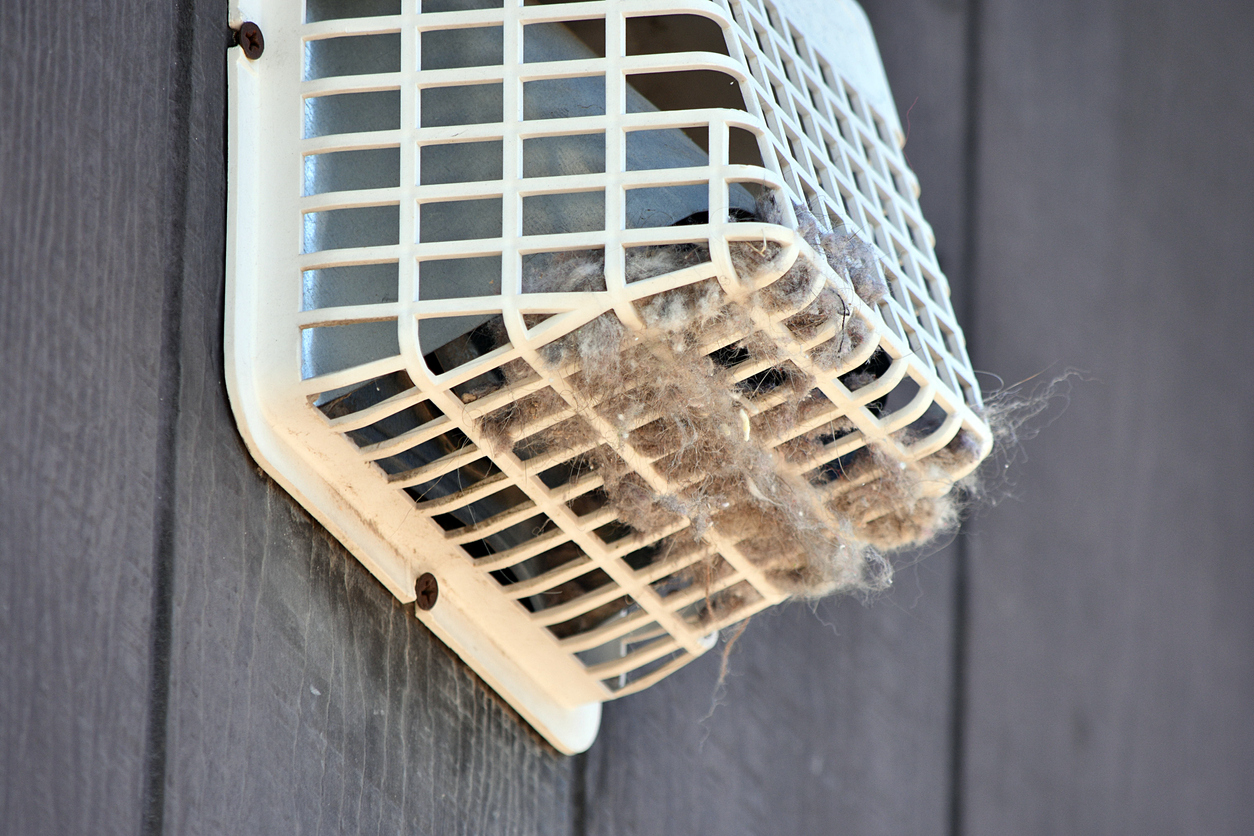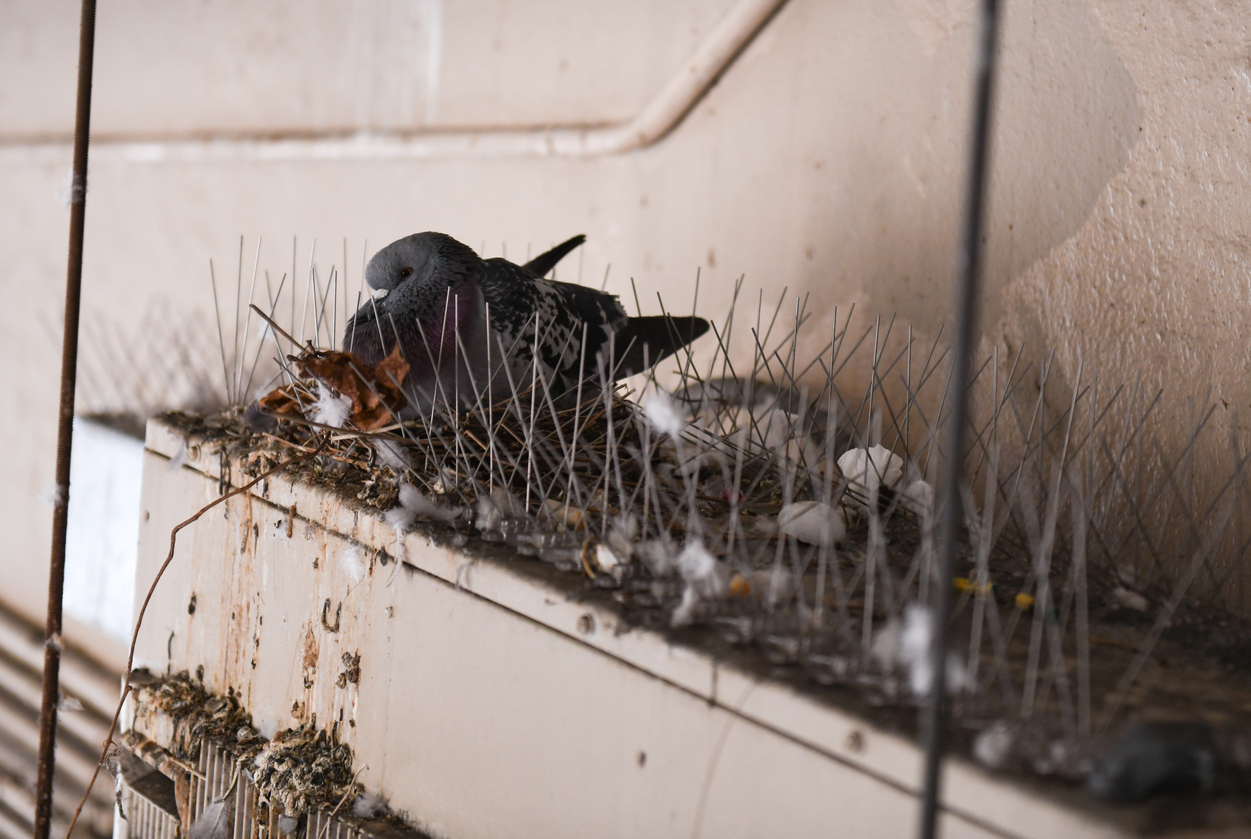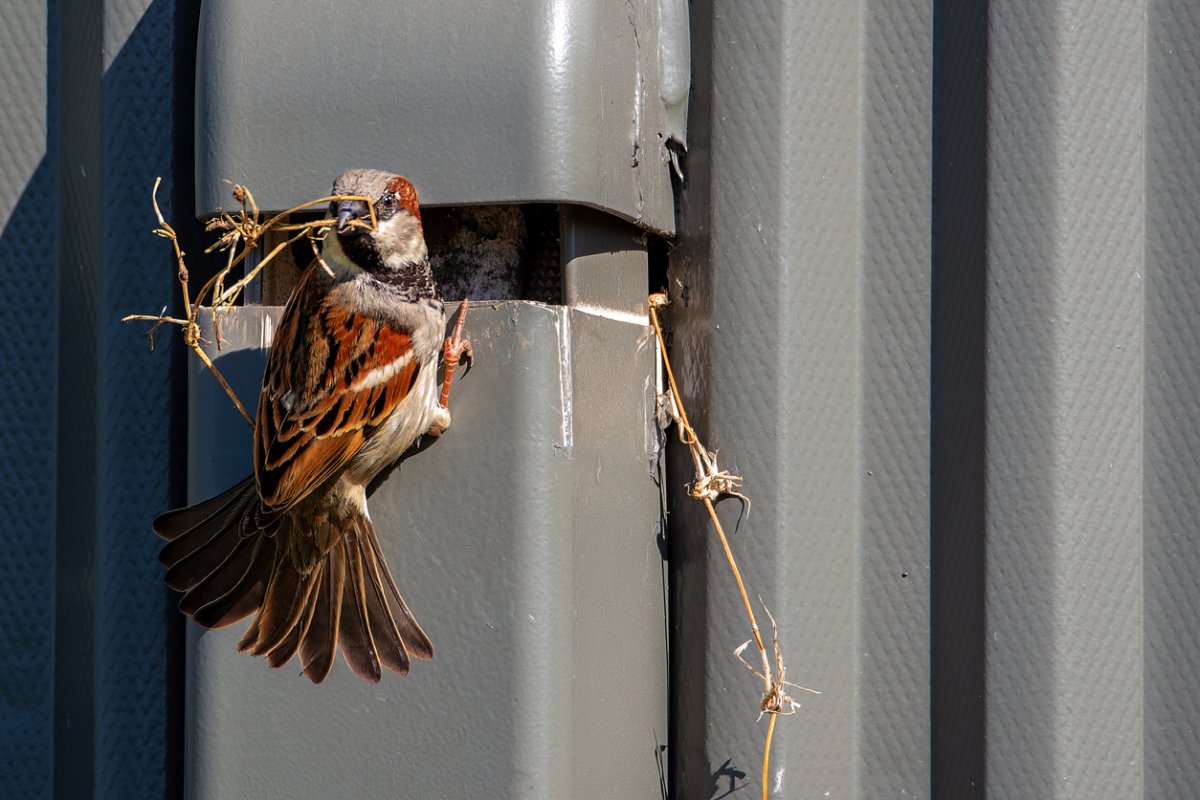We may earn revenue from the products available on this page and participate in affiliate programs. Learn More ›
What You Need to Know
- Signs of birds in a dryer vent include chirping sounds, debris hanging from the vent, birds flying to and from the vent opening, droppings underneath the vent, and decreased dryer performance.
- Birds in the dryer vent are not to be ignored as their presence can lead to dryer or dryer vent damage, fire, carbon monoxide buildup, pest issues, and the spread of disease.
- The safest and most humane way to handle birds in the dryer vent is to enlist the help of a wildlife removal service.
- Future issues with birds in dryer vents can be prevented by installing a vent guard.
Q: Lately I’ve been hearing chirping noises from what sounds like the inside of my dryer vent. What should I do about birds in my dryer vent? Can I remove a nest myself, or do I need to call someone?
A: Dryer vents are a popular nesting site for small birds like starlings as they provide shelter, warmth, and protection from predators. Unfortunately, birds nesting in dryer vents can be hazardous for homeowners and birds alike. Birds run the risk of getting stuck or developing respiratory problems from exposure to lint, which is toxic to them. For homeowners, reduced dryer performance, vent damage, bird mites in the home, and even fire or carbon monoxide poisoning are real concerns. Jason Carter is an appliance technician and the founder of Simply Swider (a website that provides tips and advice from experts on appliance maintenance and repair). He says, “Running the dryer with a blocked vent is a safety hazard. It will not only prevent your clothes from drying properly but can also cause the dryer to overheat, posing a fire risk. It’s essential to remove the blockage immediately and refrain from using the dryer until the vent is clear and functioning correctly.”
To remove birds or bird nests in dryer vents, it will probably be necessary to call in one of the best wildlife removal services (such as Critter Control or Trutech). Professionals know how to get birds out of vents without harming them or damaging the vent itself. Before taking action, it’s important to learn the dangers of this issue, what to do about it, and how to prevent birds from nesting inside the vent in the future.

Some signs of birds in a dryer vent are chirping sounds, bits of debris sticking out of the vent, and birds flying to and from the vent opening.
The sound of chirping birds can be pleasant in the right context, but when it sounds like it’s coming from inside the walls it may be a sign that there are birds in the exhaust vent. Some visual signs to look for include grass or debris coming out of the vent or birds entering or exiting the vent opening. There may also be droppings collecting directly underneath the vent. Finally, if the blockage is severe enough, there may be a noticeable decline in the performance of the dryer since air is not able to flow freely from the vent. Any evidence of a bird nest in the dryer vent is reason enough to have a local wildlife removal specialist inspect the area and determine the next steps.
Nests in dryer vents are a major safety hazard that can lead to fires, carbon monoxide buildup, bird mite infestation, and even the spread of disease.
A bird’s nest in a dryer vent may seem relatively harmless, but the opposite can be true. “The main problem arises when the nest completely blocks the vent, hindering the dryer’s ability to exhaust air properly,” says Carter. “This blockage means your clothes won’t dry efficiently, and more critically, it can result in the dryer overheating.” The dry materials from the nest can sometimes get sucked into the dryer and ignite a flame. Carter adds, “I’ve witnessed situations where this overheating caused the dryer’s thermal overload to blow—a safety feature intended to prevent fires. Unfortunately, in some cases, this wasn’t enough to prevent damage, and the dryer was burnt, posing a severe fire hazard to the home.” Dryer vent air from gas dryers is unsafe to breathe as it contains carbon monoxide, so improper venting can become a significant, and even deadly health hazard.
Additionally, it’s worth noting that wild birds can carry diseases or bird mites that can make their way into the home via the dryer vent. Pathogens such as salmonella that are transmitted by birds can also cause illness in people when ingested or inhaled. Bird mites bite and can cause itching and skin rashes in people who are exposed to them. Fortunately, the heat of the dryer is likely to kill any bird mites that make it that far, but it’s still a good idea to avoid handling nests without gloves.

A wildlife removal specialist can safely and humanely remove birds from a dryer vent.
A wildlife removal specialist can perform bird removal from the vent in the safest and most humane way possible. “It’s best to involve a certified wildlife removal contractor for the birds themselves,” Carter says. “These professionals can safely remove the nest, ensuring the birds are not harmed in the process. They also have the expertise to relocate the nest, often installing a temporary birdhouse nearby, and taking measures such as installing chicken wire to prevent future nesting in the vent.” Bird nest removal costs can range anywhere from $100 to $2,000 depending on the complexity of the removal and whether any cleanup or prevention services are included.
It’s also important to have a dryer vent technician clean the vent and ductwork and inspect for damage before using the dryer again.
Once the dryer vent is clear of birds and nests, it’s a good idea to have one of the best dryer vent cleaning services (like Stanley Steemer) inspect the vent and give it a thorough disinfecting. Bird activity has the potential to cause damage to the vent and ducts that can impact the dryer’s performance. If this is the case, a few repairs may be necessary (or if the damage is severe, the cost for new dryer vent installation averages $80 to $1,000). A thorough cleaning will loosen any remaining debris from the nest as well as remove residual mites and germs. Dryer vent cleaning costs typically range from $102 to $179 depending on how big the vent is, its location, and the complexity of the job. Even if every trace of the birds and their nest has been removed, experts recommend cleaning dryer vents about once a year to prevent lint and debris buildup, which can cause fires if not removed. It’s important to note that while there are plenty of online resources for learning how to clean dryer vents, professionals are best equipped to do this job thoroughly and without damaging the vent.
Finally, some preventive measures will need to be taken to ensure that birds are not able to access the dryer vent in the future.
Even the best dryer vents are prone to visits from birds if they are not equipped with vent guards. The good news about birds stuck in dryer vents is that once they’re out, measures can be put in place to prevent them from finding their way inside again. One way to do this is to have a professional who installs dryer vents put a vent guard over the exterior opening of the vent. A vent guard is essentially a cage for a dryer vent. It is small enough to keep birds from nesting in a dryer vent but still allows hot air to exit the vent when the dryer is running. In some cases, the wildlife removal service that removed the birds may also offer vent guard installation. Vent guards can simply be screwed onto the vent with a screwdriver, so those who are handy may even be able to install the guard themselves to save on labor. “It’s also a good idea to regularly inspect the vent to ensure it remains clear and secure, as prevention is key to avoiding these issues down the line,” advises Carter. By following these steps, it is possible to have a bird-proof dryer vent for the foreseeable future.


